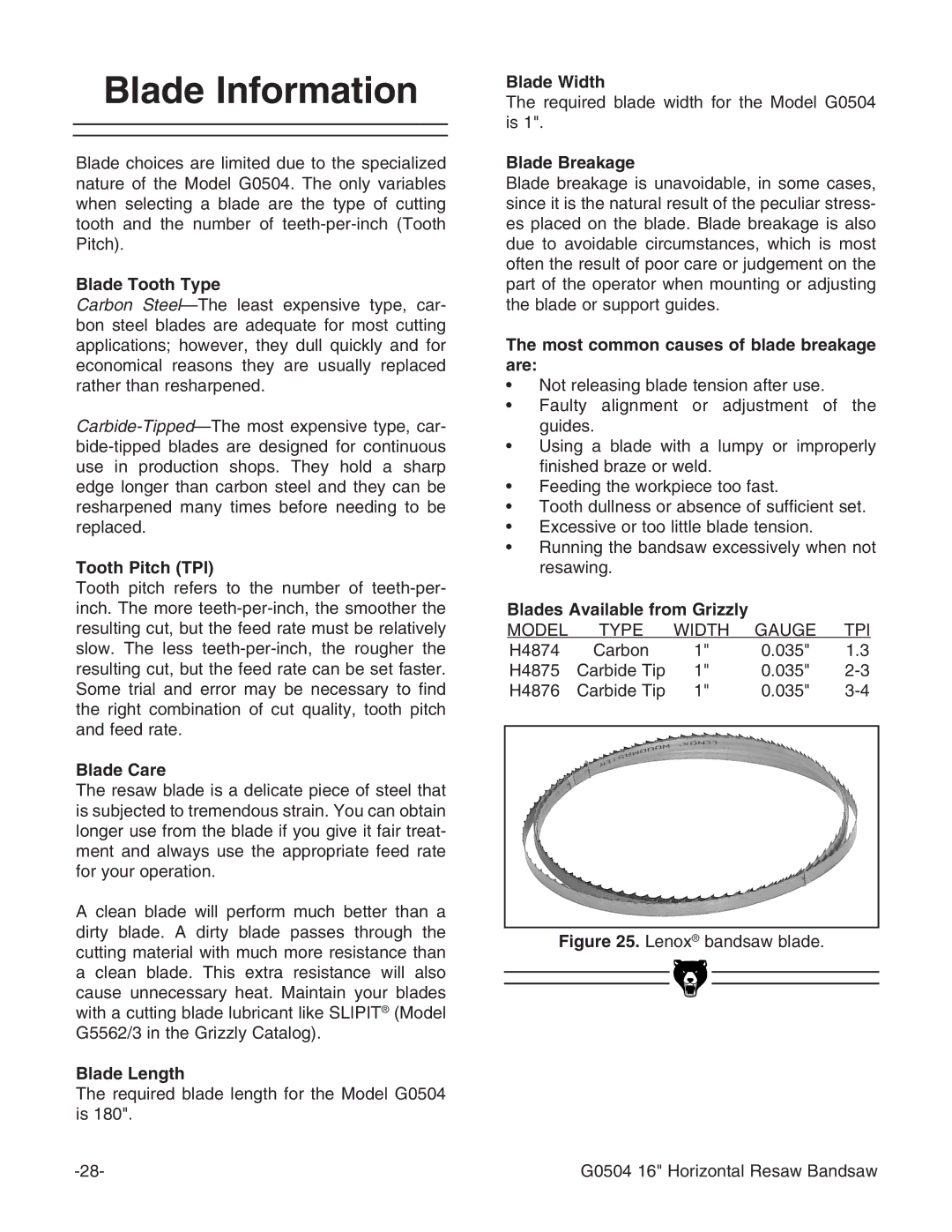
Blade Information
Blade choices are limited due to the specialized nature of the Model G0504. The only variables when selecting a blade are the type of cutting tooth and the number of
Blade Tooth Type
Carbon
Tooth Pitch (TPI)
Tooth pitch refers to the number of
Blade Care
The resaw blade is a delicate piece of steel that is subjected to tremendous strain. You can obtain longer use from the blade if you give it fair treat- ment and always use the appropriate feed rate for your operation.
A clean blade will perform much better than a dirty blade. A dirty blade passes through the cutting material with much more resistance than a clean blade. This extra resistance will also cause unnecessary heat. Maintain your blades with a cutting blade lubricant like SLIPIT® (Model G5562/3 in the Grizzly Catalog).
Blade Length
The required blade length for the Model G0504 is 180".
Blade Width
The required blade width for the Model G0504 is 1".
Blade Breakage
Blade breakage is unavoidable, in some cases, since it is the natural result of the peculiar stress- es placed on the blade. Blade breakage is also due to avoidable circumstances, which is most often the result of poor care or judgement on the part of the operator when mounting or adjusting the blade or support guides.
The most common causes of blade breakage are:
•Not releasing blade tension after use.
•Faulty alignment or adjustment of the guides.
•Using a blade with a lumpy or improperly finished braze or weld.
•Feeding the workpiece too fast.
•Tooth dullness or absence of sufficient set.
•Excessive or too little blade tension.
•Running the bandsaw excessively when not resawing.
Blades Available from Grizzly |
|
|
| |||
MODEL | TYPE | WIDTH | GAUGE | TPI |
| |
| H4874 | Carbon | 1" | 0.035" | 1.3 |
|
| H4875 | Carbide Tip | 1" | 0.035" |
| |
| H4876 | Carbide Tip | 1" | 0.035" |
| |
|
|
|
|
|
|
|
|
|
|
|
|
|
|
Figure 25. Lenox® bandsaw blade.
G0504 16" Horizontal Resaw Bandsaw |
